|
ANALYTICAL IMAGINATION CHALLENGE NUMERO UNO
Your imagination challenge numero uno will be cleverly titled, double-spaced, have 1-inch margins and be carefully proofread; additionally, it will be full of active verbs and, in general, have syntactic variety so as to avoid the dangers of the "IS" VIRUS (use the sample grading sheet opposite as a checklist of what NOT to do). Lastly, please use MLA or University of Chicago works cited pages formatting. Your eyegasmic expository bundles of genius are
due at the beginning of class Tuesday, October 11, 2016
All "A-grade" level imagination challenge responses will integrate select, direct
quotations
from the primary texts read thus far in the class this semester and will avoid ALL of the
quicksand-like bad habits listed on the gradesheet already mentioned above--click it to make it readable. Additionally, A-level grades
will be awarded ONLY to crafty undergraduates who make use of scholarly
research discovered either by
prowling the stacks (the shelves and shelves of books that fill Love Library, aka
the "Library of Love") or that you can gather off of JSTOR or PROJECT MUSE--be sure to CITE THESE WORKS CAREFULLY. In
general, avoid research garnered from the internet--any use or
adaptation of material from Spark Notes, Cliffs Notes, Barron's Notes,
etc (and especially essays that rely on Wikipedia) will likely be
returned to you ungraded or burned ritually at a secret sacred site guarded by druids! One last bit
of advice, do NOT plagiarize ANY material from an online source or
'paper mill.' In other words: unCITED material = PLAGIARISM; also, as noted above, if
you are going to analyze a key element
from an illustrated or filmed work, do please go to the bother of
xeroxing the image and incorporating
it INTO your essay with captions and with a notation in the 'Works
Cited' to let your readers know where you got it from. Last hint? Have a blast with this paper! Try things you have NEVER tried before! Test the limits of your imagination! Good luck! This IMAGINATION CHALLENGE is slightly different from other writing assignments you may have completed as an undergraduate (for example, please leave everything you learned to loathe in RWS 100 or 200 at the door--unless your instructor was a genius, in which case, use your best judgement). For this Imagination Challenge Numero Uno (Number One), you will fill in the blanks provided below and then complete the essay making sure to provide specific textual evidence to sustain/defend/illustrate your stated position in your writing! FINISH only ONE of the following challenges. Note that some of the blanks below are meant to be filled with authors' names whilst others should be filled with specific phrases/ideas; read the prompts carefully to make your final determination. One last thing. Try to finish your paper a DAY BEFORE it is due. Print it out and lay it on a desk in your room. A day later, wake up early and take this printed work and go to a room/library/cafe you don't usually go to--go there with a big old printed dictionary, you should own one and you can get good ones for cheap at old book stores like Maxwell's House of Books, Adams Avenue Books, DG Wills Books, Bluestocking Books and other area book shops. Take your paper to this special place and edit your paper. We really don't have the power to carefully edit a document on the screen where it was composed. You must switch the medium, going from screen to paper, from photons to ink, to see errors your reader will trip over! Cool. Go for it! Here are your prompts! Unless you KNOW you can write a better introductory paragraph, please use these PromptParagraphs™ (an intellectually enhanced version of MadLibs!) as your actual opening paragraph for your paper. Option 1. Sigmund Freud, via Richard Appignanesi and Oscar Zarate, Goes For a Walk With Charlotte Perkins Gilman Richard Appignanesi and Oscar Zarate's graphic treatment Sigmund Freud and his theories of hysteria explode
with images and stories that bring Freud's theories to life. Their
vision of
Sigmund
Freud's evolving theories on hysteria are both provocative and clever.
In particular, Appignanesi/Zarate's
analyses of Freud's theory and practice seem perfectly suited to an
analysis (diagnosis?) of the main, possibly unnamed character from
Charlotte
Perkins Gilman's"The Yellow Wallpaper." In the
pages that follow, I will attempt to forge a link between Appignanesi
and Zarate's intriguing treatment of Freud's work, and Gilman's short
story,with a particular focus on
____________________________. By doing so, I hope to illustrate how __________________________... Option 2. Psychology
& Art History (note that doing this challenge means also doing some
cool secondary research on human psychology) A provocative graphic narrative by writer Richard Appignani, and artist Oscar Zarate, Graphic Freud: Hysteria challenges
its readers to explore the
_________________ of human psychology--to be more specific,
Zarate/Appignanesi take viewers on a tour of _____________________
introducing
characters and situations that reveal ______________________. Recently,
specific scholars have written treatises that shed new light on Freud
writings on hysteria--typical among these is "_______________________{essay title}________________________" written by
____{scholar's name}_________________. However, I am not totally content, with Professor
_________________'s study on Freud's scribblings on hysteria. In the paragraphs that
follow, I will briefly illustrate my problems with his/her work and
suggest better ways to explore the concept using Zarate & Appignanesi's novel comic book to guide my way. Option 3. Junichiro Tanizaki, Surrealist Cathrin Klingsöhr-Leroy's Surrealism introduces us to dozens of creative visual artists who transformed the art world (and the world at large) with their mesmerizing paintings and sculptures. Along the way Klingsöhr-Leroy treats us to a veritable mini-history of Surrealism with a critical introduction that situates the movement with regard to Art History and History in general. Using Klingsöhr-Leroy's writings as my point of departure, I will, in these pages, seek to draw a connection between the work of the surrealists and the writing of Junichiro Tanizaki in The Key. One of Klingsöhr-Leroy's key theses is that surrealist artists sought to incorporate Sigmund Freud's theories on their splendid canvases; similarly, Tanizaki can be seen to reveal the complicated corridors of the human psyche in his dueling pair of exposed diaries. At first glance, it may seem that the surrealists are more concerned with ________________________ while Tanizaki more focused on ____________________________. I will show, however, that the unlikely pairing have more in common than not, especially when it comes to _____________________________. Option 4. Tanizaki and Vonnegut, Fused! How
is it possible that a Japanese novelist from the first part of the 20th
century and an American novelist from late 20th and early 21st century
can be seen to
share a singular obsession? And yet that is the case with The Key and Breakfast of Champions. In
my brief study that will unfold before you here, I will take the time
to focus on the themes of _______________ and
_______________________ as I weave a critical tale of
Tanizaki and Vonnegut's kinship. But I will also take time below to
point out their contrasts, especially with regard to
__________________________________. Option 5. Comparative Literature: Kurt Vonnegut and Nick Hornby The best literature is merely a vehicle for surveilling the complex corridors of the human mind. With ___________{main character name}___________(from Breakfast of Champions) and ___{main character name}__________ (from High Fidelity), writers Kurt Vonnegut and Nick Hornby introduce readers to _________________________________. I will use the next few pages to creep carefully into the psyches of these two memorable characters from literature in order to explore how ___________________________. In order to add complexity to my comparative dissection of Green's and Plascencia's achievements, I will incorporate a recent piece {after 2010} of literary criticism authored by __________________ on _______________________ that helps us probe the imaginative depth and psychological complexity of these two memorable characters. Option 6. Charlotte Perkins Gilman and Nick Hornby, Reconsidered Charlotte
Perkins Gilman does a remarkable job letting get inside the head of her
unnamed main character in "The Yellow Wallpaper" giving us a taste of
the female psyche, in particular showing how
______________________________. Alternatively, Nick Hornby does
something altogether similar with High Fidelity, introducing
us to Rob Fleming, whose male psyche reveals, among other things,
how________________________________. In the paragraphs that follow, I
will attempt to compare and contrast Gilman's and Hornby's findings
regarding the male and female psyche. In particular, I hope to explore
how ______________________ .... Option 7. Allusions Allusions Allusions... In the first four weeks of this class, we have been drowned in literary and cinematic works that are filled with allusions and while Professor Nericcio has been scrupulous in his tracking down many of these significant allusions, he just does not have the time in 75 minutes with 300 students to really explore the down and dirty nitty gritty of some of the more curious allusions we have run across so far. In the paragraphs that follow, I will try to document some of the more compelling literary allusions we have run across that our good Professor failed to focus on in class... Option 8. Verisimilitude or The Play within the Play Many of the works that have happened our way this term are metatextual--that is, they are as likely to tell a compelling fictional tale as they are to tell a story about the nature of storytelling itself (in a sense, then, we can say that most of the psychedelic works we have sampled this semester are allegorical). In critical writings, this practice goes by various names: self-referentiality, postmodernity, poststructuralism, and 'breaking the fourth wall'. Trapped in Love Library, I happened upon _______________________________ written by ___________________________. His/Her writings on the nature of self-referentiality/postmodernity/poststructuralism/'breaking the fourth wall'/ metatextuality (PICK ONE) give us a better way to enter into a discussion of _____________________________ and _________________________ (pick two works we have worked on this semester). Using this critical work, I will attempt to show how_________________________________..... Option 9: Music and Literature Develop your own thesis focused on the revelations you have gained from the material provided by Eric Smigel for his Music 351 class and any two texts (books, photography books, graphic narrative, anything we have read/seen/screened) from our class. As with all the other options, it is imperative that you incorporate scholarly research in order to get an A-level grade. Option 10: Literary Criticism and The Key Encountering Junichiro Tanizaki’s The Key,
readers trade in their average, everyday reading glasses for veritable
fun-house mirrors bursting with kaleidoscopic secondary meanings that
radiate from beneath the novel’s surface. While flipping through the
pages of the characters’ diaries, readers must abandon their unwavering
trust in the narrator when it becomes clear that everyone reading the
diaries (including us!) is acting as a voyeur. Scholars such as
_____________ have examined the significance of voyeurism in Tanizaki’s
novel, and I will briefly expand upon _______________’s observations
and craft some of my own by putting my rad, analytical lenses on to
dive deeper into how the diary and narrative structure of The Key create __________________________. Option 11. Roll your own! Develop and refine your OWN independent fill in the blanks prompt--it must make use of at least two works from the 1st half of the semester up to Nick Hornby's High Fidelity. You MUST bring your proposal to me, typed out on paper by the beginning of class Tuesday, October 4, before OR after class (typed, please) or email your proposal to me at memo@sdsu.edu--no proposals will be considered after classtime Tuesday October 4, 2016. You are also welcome to run it by me in person during office hours or by appointment. Have fun!
|
| MODELS FOR GOOD LITERARY AND FILM CRITICISM |
| If you have never read a good piece of literary
criticism or film theory, it is probably a good idea to read some
BEFORE you tackle this writing assignment; below appear paragraphs and
a link to some good writing focused on literature and film. As you do
your research for your essay, pay attention not just to the ideas of
the critics you select to share in your essay as proof, pay attention
as well to the way they carefully craft these arguments. Edward Said, one of my stylistic mentors, on Joseph Conrad... 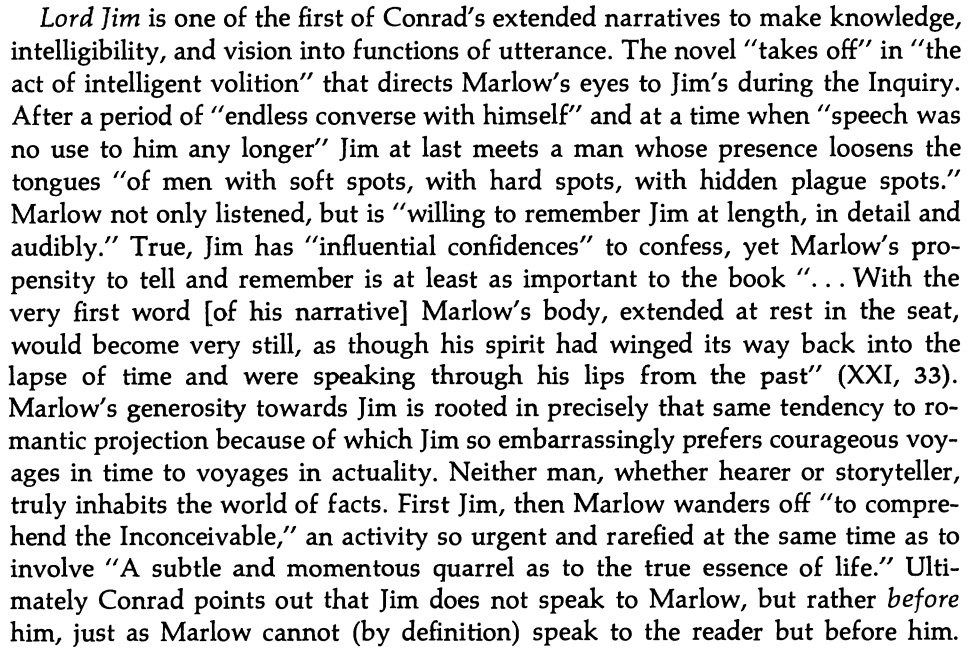 Edward Said, again, on Joseph Conrad (and Sigmund Freud)...  Helen Vendler on Criticism 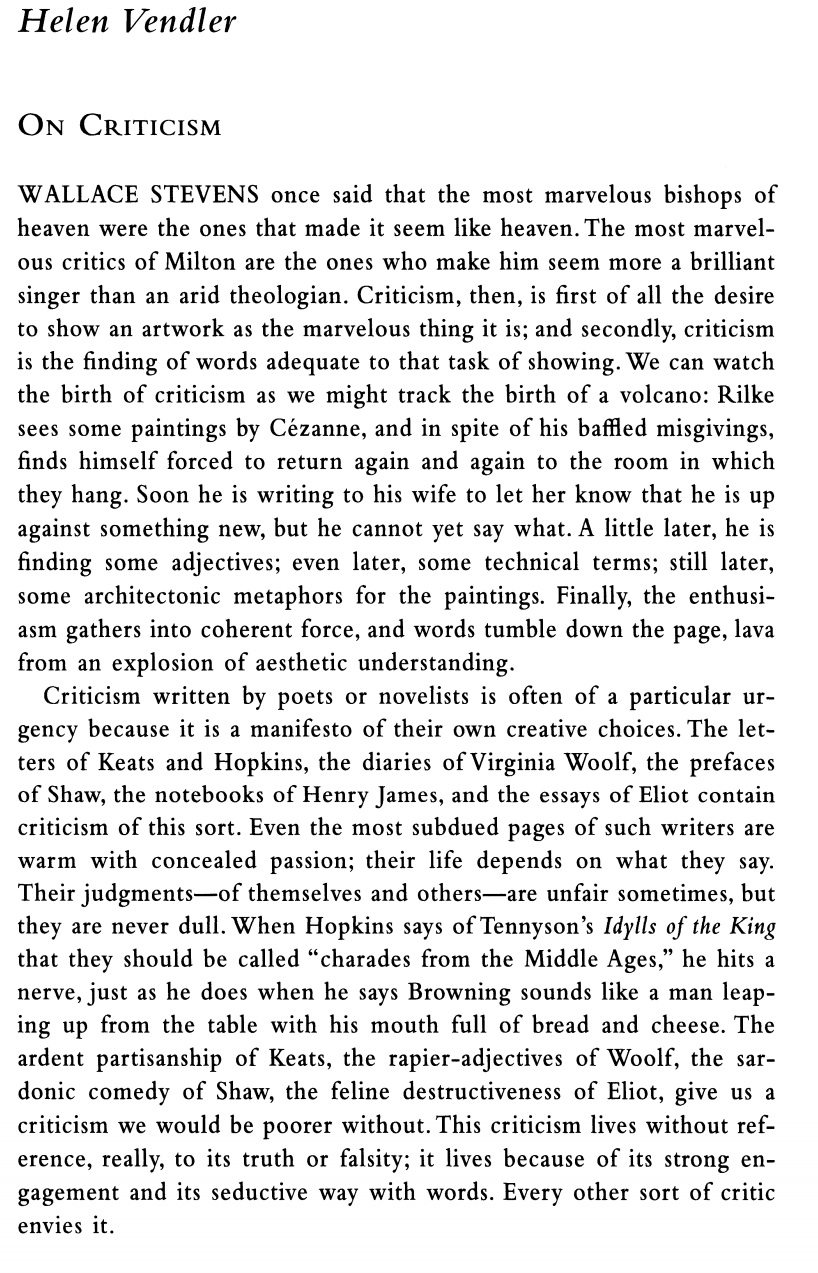 and last, J. Hoberman (extra-cool film theorist)... (click image to see/read his full review)... 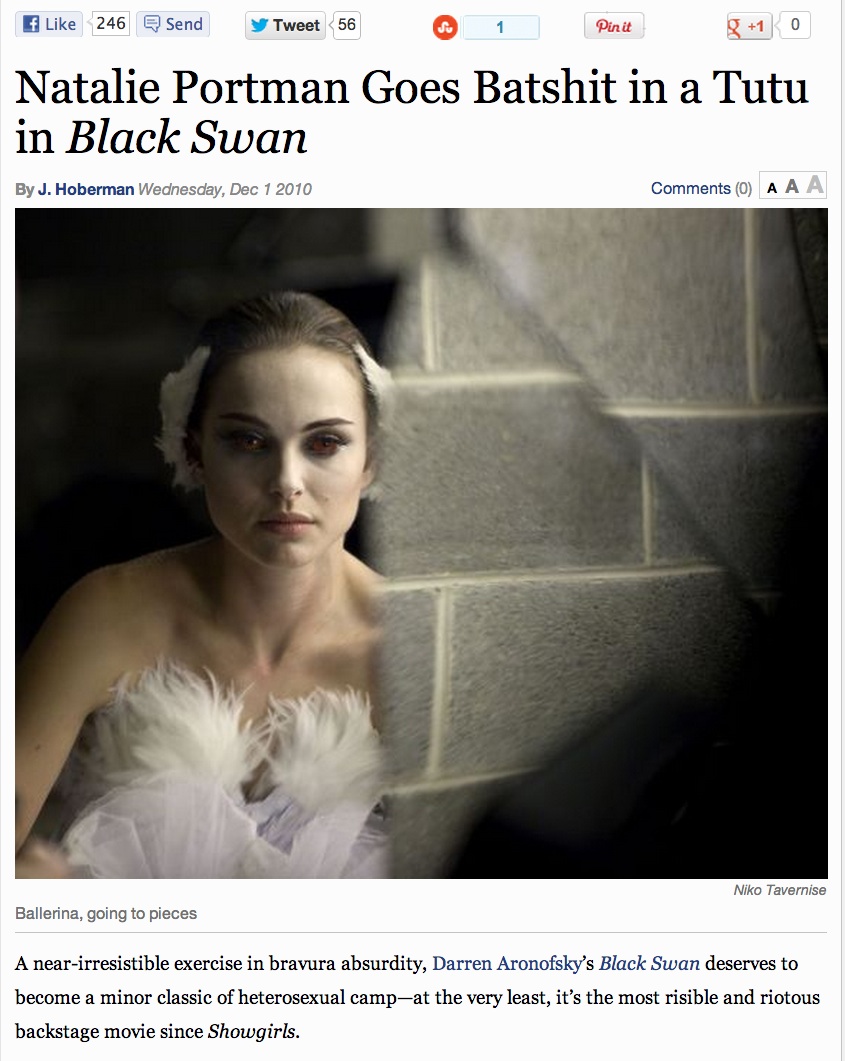 |
| urgent issues? email: memo@sdsu.edu |
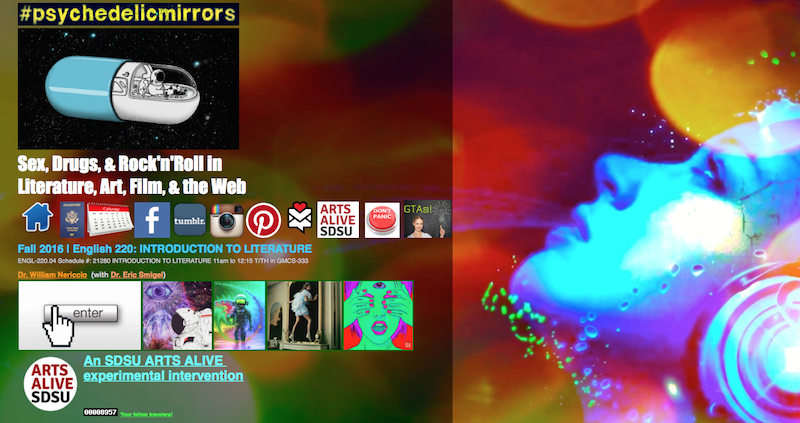 Back to your day to day diary! |
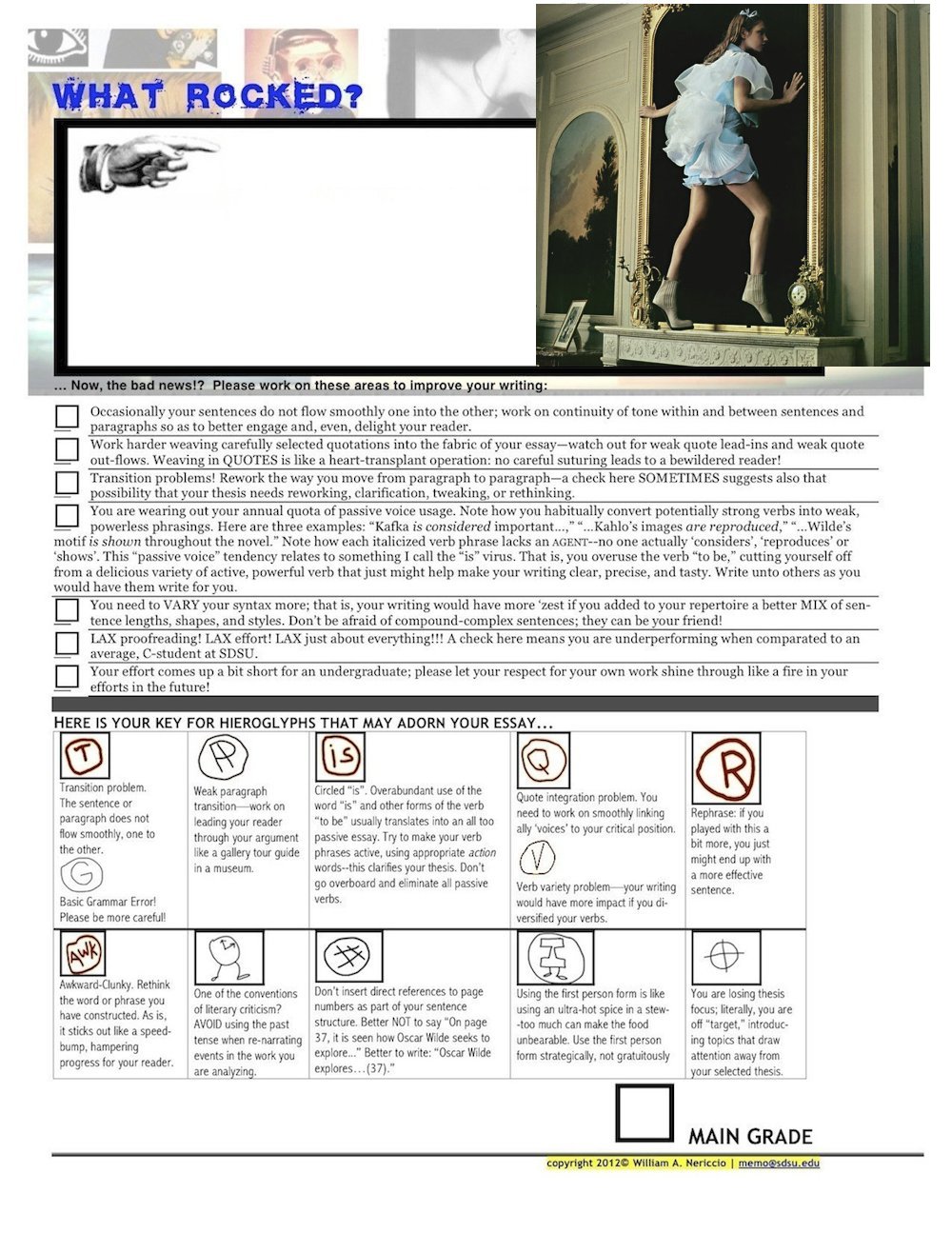
 --you will drop your paper into the decorated bags at the front of the room that correspond
to your specific Psychedelic Mirrors team (there will be one other bag with my name on
it as well for those who want to brave the choppy waters of my grading!)
--you will drop your paper into the decorated bags at the front of the room that correspond
to your specific Psychedelic Mirrors team (there will be one other bag with my name on
it as well for those who want to brave the choppy waters of my grading!)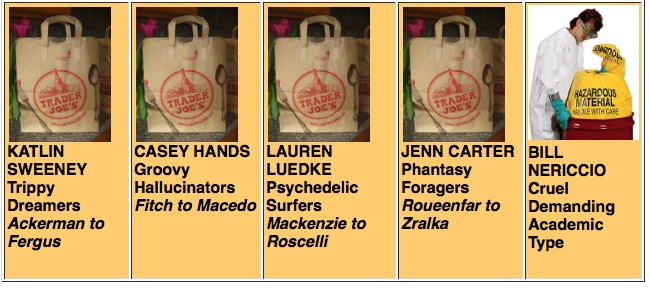
 Write unto others as you would have them write for thee!
Write unto others as you would have them write for thee!